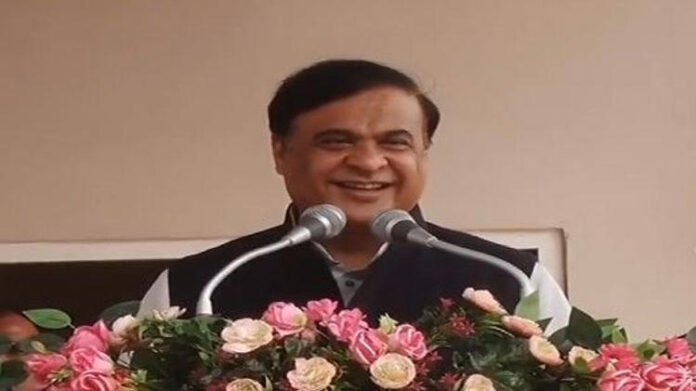The recent demolition of the ‘Mahafezkhana’ in Guwahati, an important historical structure, has sparked widespread outrage across the city, with many locals and cultural activists expressing their anger over the destruction of a site with deep historical significance. The controversy has intensified after Assam’s Chief Minister, Himanta Biswa Sarma, termed the building a “symbol of gulami” (slavery), which has further inflamed the situation. The incident has led to heated debates about heritage conservation, cultural identity, and the government’s approach to historical landmarks.
What is the ‘Mahafezkhana’?
The ‘Mahafezkhana’ was a historical structure in Guwahati that held cultural and religious significance for the local community. It was believed to have been used as a place for preserving important manuscripts, books, and artifacts during the reign of the erstwhile rulers of Assam. Over the years, the building had become a symbol of the region’s rich history, housing elements of its Muslim heritage. For many, it represented a significant link to Assam’s past and a reminder of its diverse cultural fabric.
As an integral part of the city’s history, the Mahafezkhana was not only valued by scholars and historians but also by the general public, particularly the Muslim community, who considered it a marker of their cultural and religious identity in Assam.
The Demolition Sparks Outrage
On the morning of the demolition, news spread rapidly that the Mahafezkhana was being razed to make way for a new infrastructure project. This immediately provoked a storm of protests from citizens, historians, and cultural groups who saw it as an attempt to erase an important piece of Assam’s history. Local residents gathered in large numbers at the site to express their dismay, with many voicing concerns about the government’s disregard for the region’s heritage.
Protesters raised slogans demanding the protection of Assam’s historical landmarks and accused the state government of failing to respect the city’s cultural diversity. The destruction of the building became a rallying cry for those advocating for the preservation of historical monuments, especially those representing the rich cultural and religious heritage of Assam’s Muslim community.
CM’s Controversial Remarks
The situation took an even more contentious turn when Assam’s Chief Minister, Himanta Biswa Sarma, made a controversial statement in defense of the demolition. Sarma described the Mahafezkhana as a “symbol of gulami” (slavery), implying that the structure represented a period of subjugation rather than pride or cultural significance. He stated that the building had been built during a time when the people of Assam were under foreign rule and that preserving such structures only served to reinforce historical subjugation.
This comment was immediately criticized by various quarters. Many saw it as an attempt to downplay the historical importance of the Mahafezkhana and undermine the heritage of a significant community in the region. Critics argued that the Chief Minister’s statement reflected a lack of sensitivity towards the Muslim community’s historical connection to the building.
In response to the backlash, Sarma stood by his remarks, further defending the demolition as part of the state government’s broader initiative to modernize and develop the city. He also reiterated his stance that Assam’s future should not be held hostage by symbols of an outdated, colonial-era past. Despite his defense, however, his comments fueled division, with many accusing him of politicizing the issue and diminishing the importance of preserving historical monuments.
A Divisive Issue
The demolition and the Chief Minister’s remarks have sparked intense debate on social media and in public forums. Supporters of the demolition argue that the development of infrastructure and modernization of Guwahati are paramount for the city’s growth. They assert that old buildings, no matter their historical significance, should make way for progress and that the Mahafezkhana’s destruction was necessary for urban expansion.
On the other hand, opponents of the demolition have questioned the need to erase historical landmarks for the sake of progress. They point out that while development is essential, it should not come at the cost of cultural and historical erasure. For many, the Mahafezkhana represented a collective memory of Assam’s diversity and history, and its loss symbolizes a disregard for the region’s complex past.
This issue has also raised broader concerns about how the government deals with cultural heritage in a state that is home to a variety of communities, each with its own unique history. The demolition of the Mahafezkhana has brought to the forefront the tensions between heritage conservation and modern development, sparking discussions about how to balance the two in a rapidly changing world.
The Road Ahead: Preserving Heritage Amid Progress
The controversy surrounding the demolition of the Mahafezkhana highlights the importance of cultural preservation in the face of urbanization. Experts and cultural advocates are calling for a more thoughtful and inclusive approach to development—one that takes into account the historical and cultural significance of landmarks while still allowing for necessary infrastructure projects.
The incident has also underscored the need for a more nuanced dialogue between the government, cultural organizations, and the public when it comes to preserving the rich cultural fabric of Assam. It is clear that heritage and modernization are not mutually exclusive, and it is possible to achieve a balance that respects both the past and the future.
As protests and debates continue, many hope that this controversy will spark a broader conversation on the preservation of Assam’s history and identity. Whether the government will reconsider its stance on demolitions and implement more robust heritage conservation policies remains to be seen. For now, however, the demolition of the Mahafezkhana stands as a poignant reminder of the challenges involved in navigating the complex relationship between history, culture, and progress in modern-day India.

